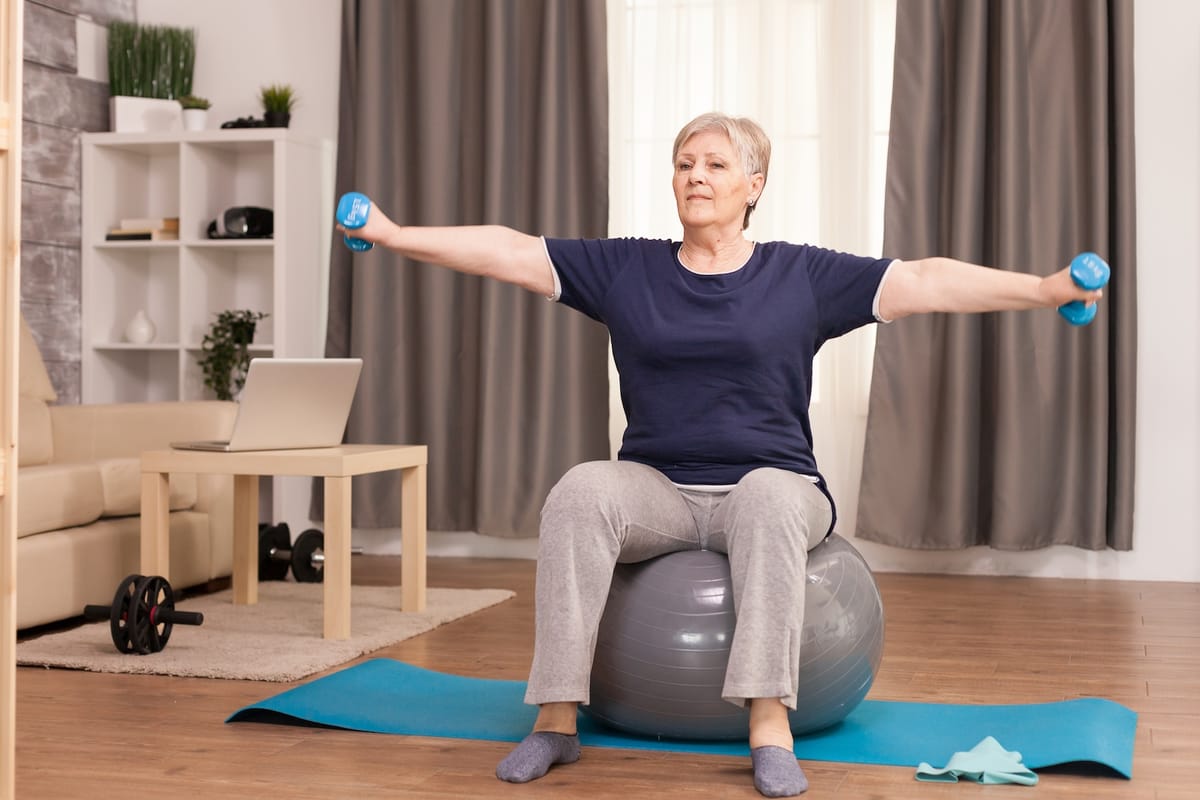

Introduction to Stability Balls for Seniors
A stability ball, also known as an exercise ball or Swiss ball, is a versatile and effective tool for seniors looking to improve their physical health. It can help enhance balance, strength, flexibility, and even cardiac capacity when used correctly. Here, we will explore the benefits of using a stability ball, how to choose the right one, and various exercises that are suitable for seniors.
The American Association of Retired Persons emphasizes the importance of muscle-building exercises for seniors, noting that such activities can help seniors achieve muscle mass similar to that of younger individuals. However, many seniors face challenges in engaging in traditional strength training. A stability ball offers a lightweight and accessible alternative that also focuses on balance and core strength.
When selecting a stability ball, it is crucial to choose one that allows your legs to form a 90-degree angle while seated. This ensures proper posture and reduces the risk of injury. If stability is a concern, consider placing the back of the ball against a wall to prevent wobbling.
Benefits of Using a Stability Ball
Using a stability ball can offer numerous health benefits for seniors. Here are some of the key advantages:
- Improved Balance: Stability balls require engagement of the core muscles to maintain balance, which can significantly improve overall balance and reduce the risk of falls.
- Strength Training: The ball can be used for a variety of strength-training exercises that target different muscle groups, including the hamstrings, quadriceps, and core muscles.
- Flexibility and Mobility: Exercises performed on a stability ball can help increase flexibility and mobility, particularly in the hips and lower back.
- Cardiac Health: Certain exercises, such as marching or leg lifts, can be performed at a steady pace to improve cardiac capacity.
Choosing the Right Stability Ball
Selecting the correct size of the stability ball is essential for effective and safe use. The ball should be large enough that, when seated on it, your legs form a 90-degree angle. This positioning ensures that your feet are flat on the floor and your back is straight, which is crucial for maintaining proper posture and preventing strain on the back and neck.
Stability Ball Exercises for Seniors
Hip Circles
This exercise targets the hip flexor muscles and engages the core muscles through proper posture. Sit on the stability ball with your legs at a 90-degree angle and feet firmly on the floor. Move the ball in a clockwise motion to make one circular rotation with your hips. Repeat this motion five to eight times and then repeat on the opposite side.
Leg Lifts
Leg lifts help strengthen the quadriceps muscles, which can support the knee area. Sit on the stability ball with your feet planted firmly on the floor and hands on either side for support. Lift one leg from the bent position to flexed and straight in front of you, holding at the top of the extension for five seconds before returning to the ground. Switch to the other leg and repeat.
Marching
This exercise increases flexibility, hip flexor strength, and cardiac capacity when performed at a steady pace. Sit on the stability ball with your feet flat on the floor and back straight. Lift one knee toward the chest, then return to the floor, and repeat with the other knee. Start slowly and work up to 20 medium-paced repetitions.
Stability Ball Hamstring Curl
Lie down on the floor or an exercise mat with your legs straightened and placed on the stability ball. Engage your core and glutes, then raise your hips off the floor to get into the starting position. Bend your knees to bring the stability ball as close as possible to your body, then straighten your legs to reverse the motion. This exercise targets the hamstrings, glutes, core, and calves.
Stability Ball Floor Taps
Get into the plank position with your toes on top of the stability ball. Activate your core and glutes, then take one leg off the ball and bring it down to the side until your foot touches the floor. Hold, then slowly bring the leg back onto the stability ball. Repeat with the other leg. This exercise enhances core stability and engages the hip flexors and shoulders.
Stability Ball Crunch
Lie faceup on a stability ball with your feet shoulder-width apart and flat on the floor. Place your hands gently behind your head for support. Engage your abdominal muscles to lift your upper back off the ball, raising until your torso forms a straight line from shoulders to hips. Pause at the top, then slowly reverse the movement to return to the start. This helps reduce stress on the spine and strengthens the abdominal muscles.
Safety Tips for Using a Stability Ball
While using a stability ball can be highly beneficial, it is important to follow some safety guidelines:
- Start Slowly: Begin with slower and more controlled movements to ensure you have control of your balance.
- Use Support if Needed: If you are concerned about stability, place the back of the ball against a wall to prevent wobbling.
- Listen to Your Body: Do not force any motion that feels uncomfortable or painful.
In Summary
A stability ball is a valuable tool for seniors looking to enhance their physical health. By choosing the right size of the ball and performing exercises such as hip circles, leg lifts, marching, and others, seniors can improve their balance, strength, flexibility, and cardiac health. Remember to follow safety guidelines to ensure a safe and effective workout. With regular use and the right exercises, a stability ball can be a key component in maintaining or improving overall health as you age.
Dues are $12 per year. Member benefits:
✅ Ad-Free Website Viewing
✅ Advocacy for Republican Seniors
✅ 120+ Senior Discounts
✅ Member Only Newsletters